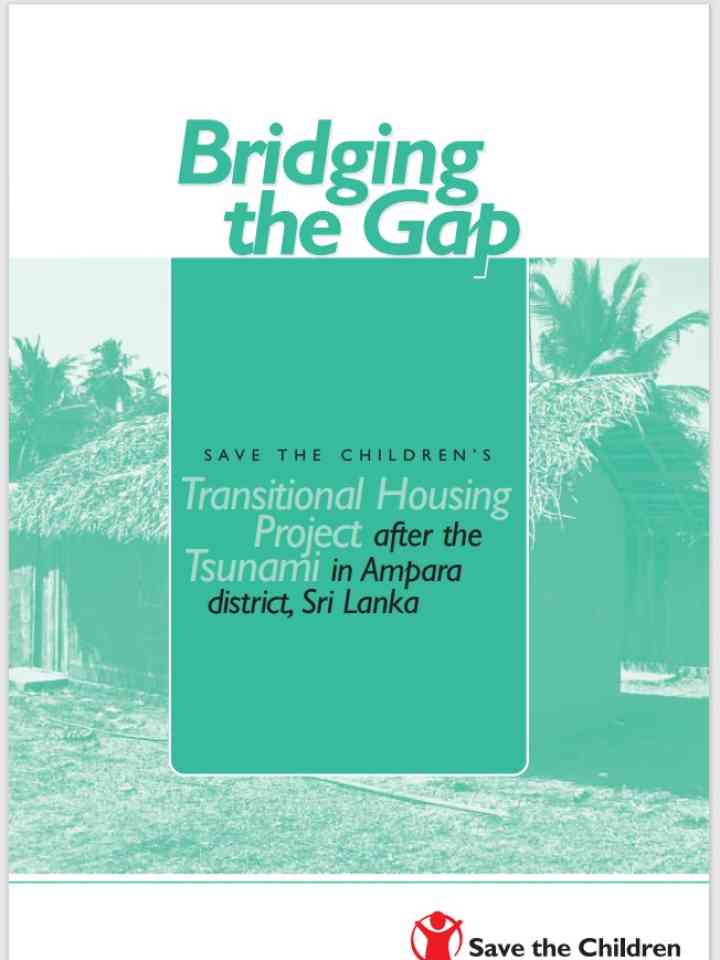Bridging the gap. Save the Children’s transitional housing project after the tsunami in Ampara district, Sri Lanka
There is an intimate link between the physical environments that children occupy and the quality of their lives. Their housing, the water they drink; the air they breathe, the traffic on their streets and the quality of their schools and neighbourhoods all have impacts on their health, happiness and long term development.
In emergencies, the physical living conditions affecting children are neither healthy nor supportive. But in relation to the protection of children in emergencies, the physical environment is often overlooked. We tend to think in terms of family separation, child soldiers and sexual exploitation and abuse of children - and some of the most blatant violations of children's rights are in these areas. But in a global context, probably the most pervasive violations of children's rights have to do with their living environments.
But this is not enough. It is crucial to address the wider physical environment around children in order to provide long term stability and security for children in emergency situations. Children and their families are being deprived of a home, sometimes of any kind of privacy. Health can be at stake due to damaged or destroyed water and sanitation systems. School facilities may have been destroyed or are used for other purposes than education. Conflict or threats of further earthquakes or floods limit the opportunities to move around. Possibilities to play indoors as well as outdoors are restricted.
The tsunami response has tended to involve the delivery of shelter units with little attention to the implications of housing reconstruction for social reconstruction and community building and with little understanding of the ways children can be affected. The result is solutions that are frequently out of touch with people's real needs, undermining families coping mechanisms and seriously affecting children's health, safety and emotional security.
Explore further

